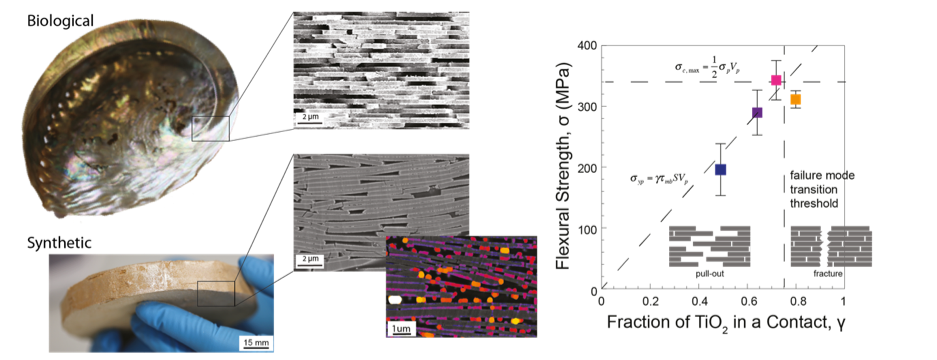Mimicking Nacre Unveils New Insights for Developing Tougher Composite Materials
Powerful guidelines for the design of lightweight composite materials inspired by the structure of strong and tough biological nacre are highlighted in a new paper from the Complex Materials Group.
Nacre, commonly called mother of pearl, is a biological composite that displays an exceptional combination of strength and non-catastrophic fracture behavior. The quantitative understanding of the structure–property correlations observed in nacre could provide powerful guidelines for the design of lightweight composite materials. In a new paper published in the Proceedings of the National Academy of Sciences, researchers from Complex Materials have fabricated nacre-like brick-and-mortar composites from aligned alumina microplatelets. By interconnecting the platelets with titania mineral bridges, the team has been able to isolate and quantify the influence of mineral bridge density on the composite’s fracture properties. Because the model synthetic material is structured from ceramic constituents at the same length scale as biological nacre, it sheds light on the fundamental role of mineral bridges in natural brick-and-mortar structures, while also demonstrating outstanding mechanical properties that compete with state-of-the-art composite materials.
Quantifying the role of mineral bridges on the fracture resistance of nacre-like composites
Madeleine Grossman, Florian Bouville, Kunal Masania, and André R. Studart; PNAS December 11, 2018 115 (50) 12698-12703; external pageDOI:10.1073/pnas.1805094115call_made

